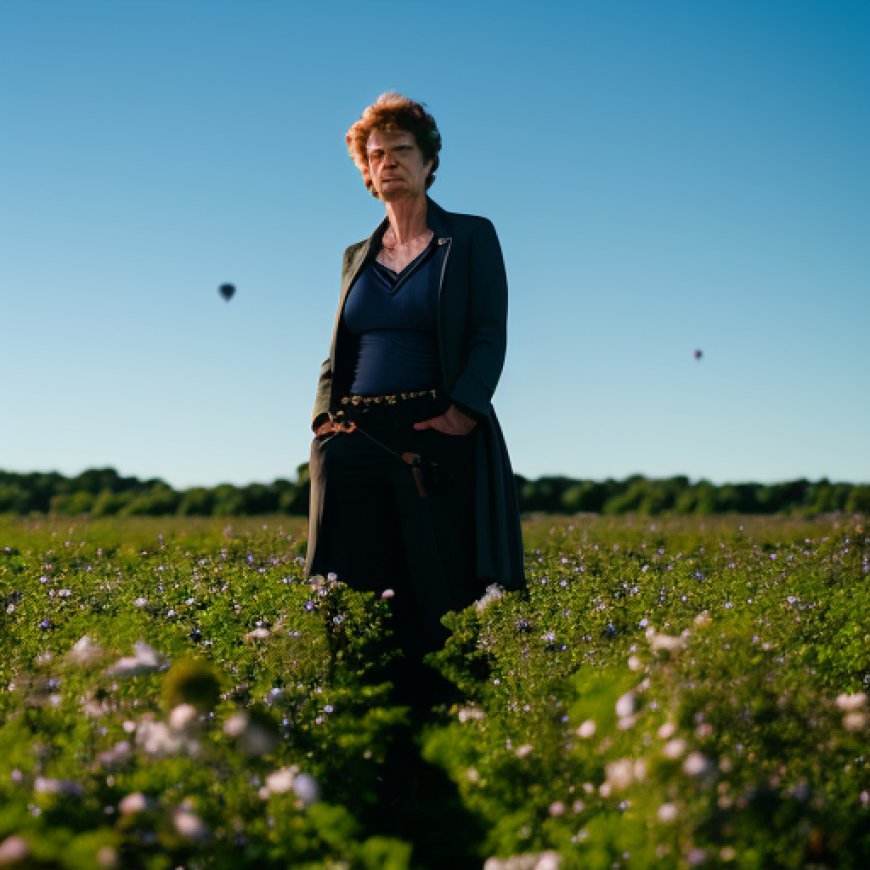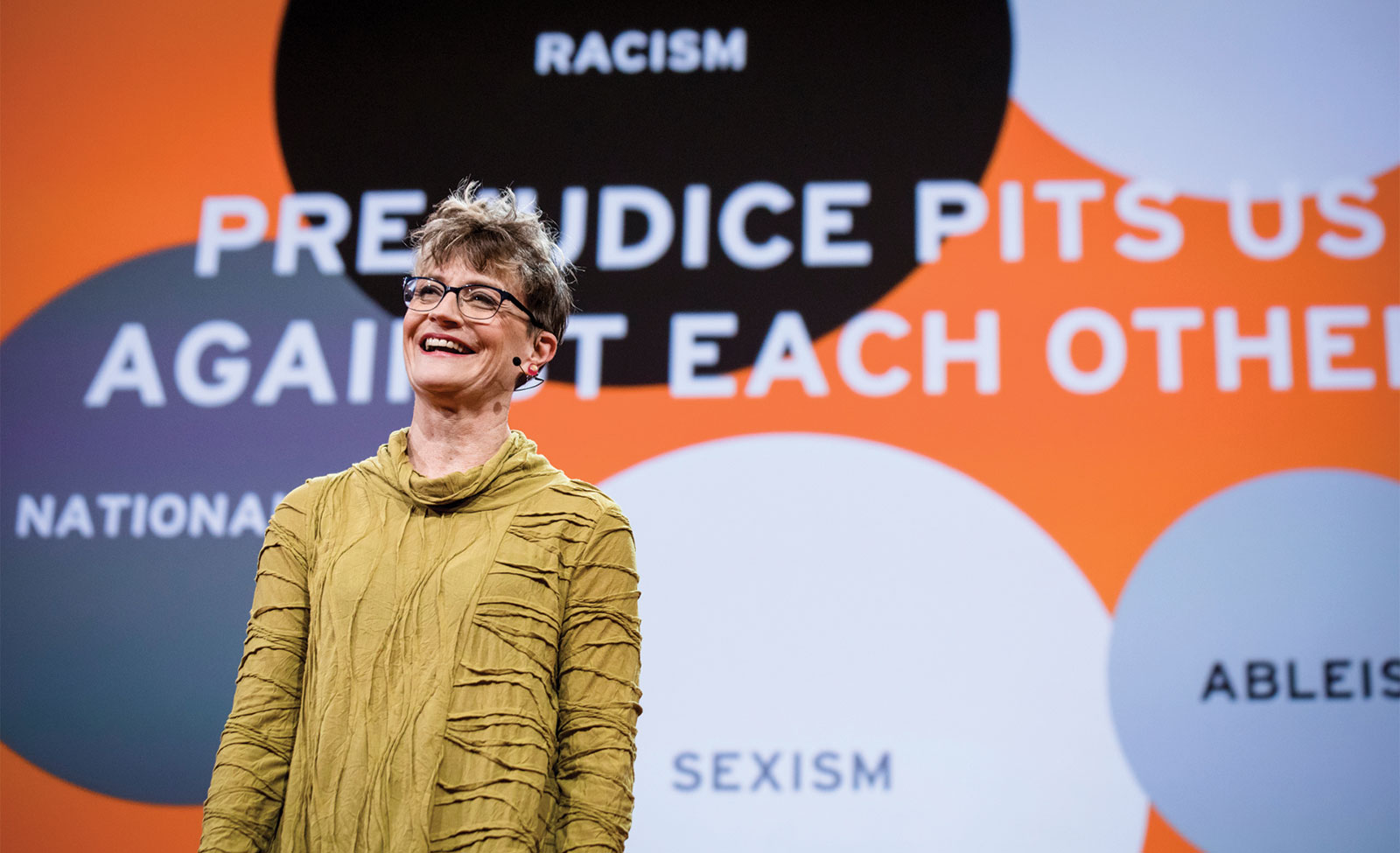Ashton Applewhite – Brené Brown
Ashton Applewhite - Brené Brown Brene Brown


Introduction
Ten years ago, Brené started the Daring Interview series on her blog. It quickly became one of our favorite features. Now, we are relaunching the series and adding in a few new questions, including some from the late James Lipton, host of Inside the Actors Studio, and Smith Magazine’s Six-Word Memoir.
I first stumbled across the work of anti-ageism activist Ashton Applewhite when her 2017 TED talk, “Let’s End Ageism,” showed up in one of my social media feeds. Although I’ve never been one to fear getting older, as she shared surprisingly optimistic statistics that exploded myths about aging, it began to dawn on me that perhaps my outlook wasn’t as enlightened as I’d thought. In fact, I began to recognize the extent to which I’d been ignoring the ageist language I’d used about my own aging when she described the way she had shifted her thinking about her tricky knee:
“I stopped blaming my sore knee on being 64,” she said. “My other knee doesn’t hurt, and it’s just as old.”
Oh. Right.
Since then, I’ve learned that Ashton’s work, including her book This Chair Rocks: A Manifesto Against Ageism, has earned her many accolades, and the United Nations has credited her book with “acting as a catalyst to raise the consciousness of people around the world on what ageism is and what we can do to dismantle it.”
Ashton exemplifies courage by amplifying the conversation around what it means to get older in a world that profits from our fears and by doing so in a way that foregrounds the need to support all struggles for equal rights.
Vulnerability is . . .
For me, talking about racism. Writing about it isn’t any easier. I feel I ought to have understood this massive crime earlier in life and how I’m implicated in it. I can be head-bangingly blind to the way I, and the culture around me, center whiteness.
What role does vulnerability play in your work?
I’m in the culture-change business. Nothing changes if we stay in our comfort zones. Challenging the status quo — naming biased language or behavior, supporting people in the crosshairs, insisting that people try hard to do better — takes courage and involves risk. That means being vulnerable: to saying something I wish I hadn’t, to encountering pushback, to being “canceled” by someone I respect. I try to take those risks.

What’s something that gets in the way of your creativity, and how do you move through it?
I like thinking. Writing, not so much. It’s slow and difficult. Books are the worst — so many words, and every damn one has to find its place! My daughter once asked, “Mom, why do you write if it’s so hard?” I said, “Because when I read something I’ve written that’s really good, it makes me feel better than anything else does.”
All the usual suspects get in the way: procrastination, laziness, dread. I move through them by forcing myself to sit down, face the task, and return to it till it is done. I’m dogged AF. Ages ago, before I had any kind of following, a friend commented, “You just keep beavering away.” That’s me, beavering away.
It’s often difficult to share ourselves and our work with the world, given the reflexive criticism and mean-spiritedness that we see in our
SDGs, Targets, and Indicators
-
SDGs addressed or connected to the issues highlighted in the article:
- SDG 3: Good Health and Well-being
- SDG 5: Gender Equality
- SDG 10: Reduced Inequalities
- SDG 16: Peace, Justice, and Strong Institutions
-
Specific targets under those SDGs based on the article’s content:
- SDG 3.4: By 2030, reduce by one-third premature mortality from non-communicable diseases through prevention and treatment and promote mental health and well-being.
- SDG 5.1: End all forms of discrimination against all women and girls everywhere.
- SDG 10.2: By 2030, empower and promote the social, economic, and political inclusion of all, irrespective of age, sex, disability, race, ethnicity, origin, religion, or economic or other status.
- SDG 16.6: Develop effective, accountable, and transparent institutions at all levels.
-
Indicators mentioned or implied in the article:
- Statistics on aging and ageism that challenge myths and stereotypes about getting older.
- Earned accolades and recognition for work on ageism.
- Credited by the United Nations for raising awareness about ageism.
- Conversation and dialogue around ageism and equal rights.
- Supporting people in the crosshairs of ageism.
- Challenging biased language and behavior.
- Encountering pushback and criticism.
Table: SDGs, Targets, and Indicators
SDGs addressed or connected to the issues highlighted in the article:
- SDG 3: Good Health and Well-being
- SDG 5: Gender Equality
- SDG 10: Reduced Inequalities
- SDG 16: Peace, Justice, and Strong Institutions
Specific targets under those SDGs based on the article’s content:
- SDG 3.4: By 2030, reduce by one-third premature mortality from non-communicable diseases through prevention and treatment and promote mental health and well-being.
- SDG 5.1: End all forms of discrimination against all women and girls everywhere.
- SDG 10.2: By 2030, empower and promote the social, economic, and political inclusion of all, irrespective of age, sex, disability, race, ethnicity, origin, religion, or economic or other status.
- SDG 16.6: Develop effective, accountable, and transparent institutions at all levels.
Indicators mentioned or implied in the article:
- Statistics on aging and ageism that challenge myths and stereotypes about getting older.
- Earned accolades and recognition for work on ageism.
- Credited by the United Nations for raising awareness about ageism.
- Conversation and dialogue around ageism and equal rights.
- Supporting people in the crosshairs of ageism.
- Challenging biased language and behavior.
- Encountering pushback and criticism.
| SDGs | Targets | Indicators |
|---|---|---|
| SDG 3: Good Health and Well-being | Target 3.4: By 2030, reduce by one-third premature mortality from non-communicable diseases through prevention and treatment and promote mental health and well-being. | Statistics on aging and ageism that challenge myths and stereotypes about getting older. |
| SDG 5: Gender Equality | Target 5.1: End all forms of discrimination against all women and girls everywhere. | Earned accolades and recognition for work on ageism. |
| SDG 10: Reduced Inequalities | Target 10.2: By 2030, empower and promote the social, economic, and political inclusion of all, irrespective of age, sex, disability, race, ethnicity, origin, religion, or economic or other status. | Credited by the United Nations for raising awareness about ageism. |
| SDG 16: Peace, Justice, and Strong Institutions | Target 16.6: Develop effective, accountable, and transparent institutions at all levels. | Conversation and dialogue around ageism and equal rights. |
Copyright: Dive into this article, curated with care by SDG Investors Inc. Our advanced AI technology searches through vast amounts of data to spotlight how we are all moving forward with the Sustainable Development Goals. While we own the rights to this content, we invite you to share it to help spread knowledge and spark action on the SDGs.
Fuente: brenebrown.com

Join us, as fellow seekers of change, on a transformative journey at https://sdgtalks.ai/welcome, where you can become a member and actively contribute to shaping a brighter future.







